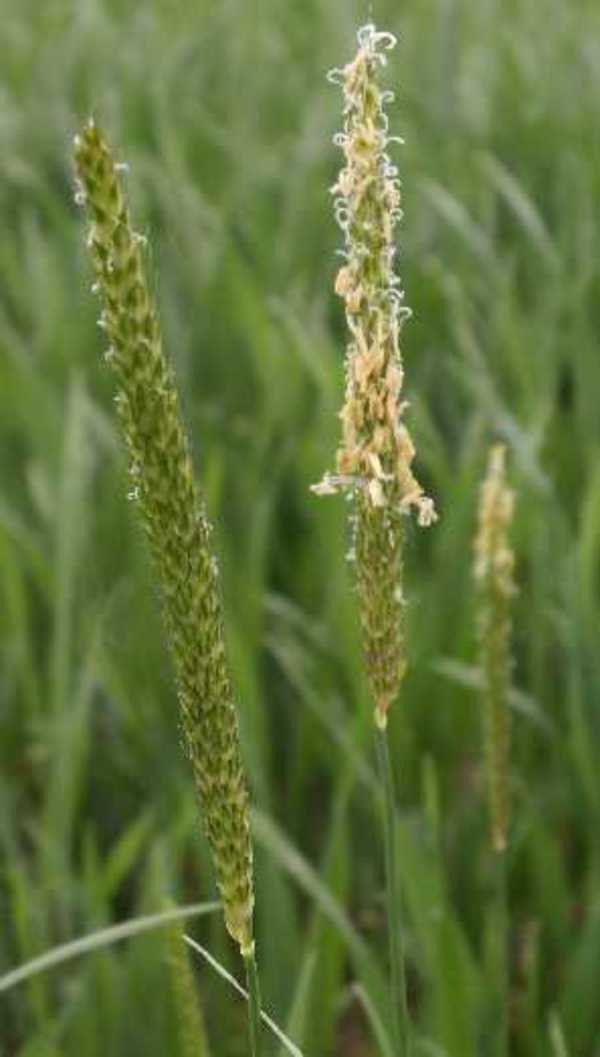I went badly off-course in last week’s blog. It started with a suggestion that I was going to discuss some aspects of the contents of the 1970 edition of Approved Products for Farmers and Growers. Perhaps this objective will be met this week.
First of all, it wasn’t a very thick book - this was still the early days of pesticide development – and there were no really effective ‘approved’ grass-weed herbicides in cereals.
Tri-allate (Avadex) had an entry, but this didn’t fit the ‘very effective’ description. I think that chlorotoluron may have been in the following year’s edition and isoproturon in the year after that.
[By the way, chlorotoluron was for a few years known as chlortoluron before the extra ‘o’ was adopted. Nobody seemed to know where the extra ‘o’ came from, but most seemed to blame the Americans. It was fashionable to blame the Americans for anything unwelcome.]
I actually remember the first time I saw the results of isoproturon on black-grass. It was a March application to very large black-grass plants and they were all scythed down to the ground. At that time, both chlor(o)toluron and isoproturon averaged 99% control in trials. I will pause whilst a few nostalgic tears are shed.
In my opinion, it was these two pesticides that started the revolution in wheat growing and yields. Up to their introduction, farmers on clay soils couldn’t grow winter wheat very regularly because of black-grass. Spring cropping often resulted in low yields and, with the equipment and understanding of that time, terrible soil compaction. Those farmers who tried to grow winter wheat more regularly had to resort to late drilling to avoid black-grass, which also resulted in damaged soil structure. No wonder that the UK Government commissioned a report in the late 1960s on the poor state of soils.
Just think what high levels of control of black-grass offered. Farmers on potentially high yielding clays could grow wheat more often or continuously, and soil structure improved because of earlier wheat sowing and no spring cropping.
The pace to higher yields was accelerated by the introduction of semi-dwarf varieties in the mid-1970s. These placed more of their above ground growth into grain rather than straw. Then the triazoles were introduced in the late 1970s and as yields grew so did the use of nitrogen.
The strange thing is that during the 1970s we didn’t think we were in the middle of a revolution in crop management. We came to expect new products and techniques to be produced on a regular basis. It was only when we looked back a few years later that there was a recognition of what was achieved during those few years.
The sad reality is that we seem to have about exhausted those technologies. The battle is now on maintaining their benefits from the challenges of resistance and legislation.
We now need a new fledgling technology that could be developed within the industry over time. Perhaps GM technology is currently at a similar stage of development worldwide that pesticides were in 1970. With a market, albeit initially for simple traits, it could bloom and be the foundation for the next step forward in yields. Unfortunately, the technology is being held back by a public that have been fed misconceptions peddled by those who go to bed every night with a full stomach.
Worldwide the technology is racing ahead and we have recently heard that the BASF biotech operation is being moved from Europe to the US where the technology has an immediate future.
There is much talk of the rest of the world moving ahead of Europe in the press. The anti-GM movement is perhaps just one example of a wider malaise in the EU. Many of our citizens still harbour the attitude that unwelcome technologies, such as GM, emanate from America.
Well, having got that off my chest, I realise that I have still not fully reviewed much of the content of the 1970 book of Approved Products. Perhaps I will have another go next week – as I am sitting on the plane on the way to Australia. Then again...
